HS TV 101: 12 Great Shows Set In or Around High School
High school: it’s a rite of passage we all must endure. Some of us weep when it’s over, others can’t wait to say goodbye forever, but for better or worse, it’s an experience that we’ll remember for the rest of our lives. The same goes for some of the many TV series that have been set in high school. Here at Bullz-Eye, we’ve polled our writers for their favorite shows within the genre, and the end result is, not unlike high school itself, a mixture of both comedy and drama.
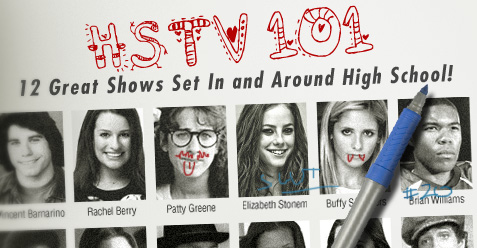
12. Life As We Know It (ABC, 2004 – 2005): Lasting only 11 episodes before ABC unceremoniously yanked it from the air, “Life As We Know It” premiered during perhaps the most cancel-happy era in television. Developed by two of the producers of “Freaks and Geeks” (maybe the writing was already on the wall), the series may have ultimately been undone by poor ratings, but the Parents Television Council’s campaign against the show’s sexual themes certainly didn’t help. Then again, when you green light a series based on a controversial young-adult novel called “Doing It” that follows the exploits of a trio of best friends (Sean Faris, Jon Foster and Chris Lowell) navigating the highs and lows of adolescence, you can hardly pretend to be surprised when its characters discuss sex on a fairly regular basis.
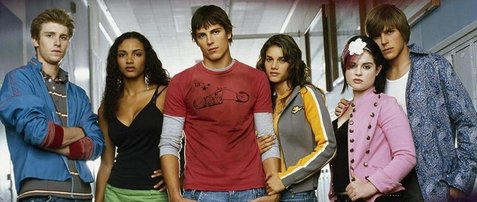
Featuring a great cast of young up-and-comers that also included Missy Peregrym and Kelly Osbourne (yes, that Kelly Osbourne, who’s never been cuter than she was here), “Life As We Know It” certainly wasn’t perfect by any means, but it easily outshined similar shows like “Dawson’s Creek” and “The O.C.,” particularly in its handling of its adult characters. The series wasn’t without the usual high school clichés, but the writers never shied away from edgier material, either – like a student having a secret affair with his teacher or a star jock dealing with performance issues – resulting in a smart, sweet and incredibly honest look at how sex changes everything. – Jason Zingale
11. Welcome Back, Kotter (ABC, 1975 – 1979): Despite suffering through remedial classes and acting far more rebellious than was deemed socially acceptable, Gabe Kotter (played by the suspiciously similarly-named Gabe Kaplan) still somehow managed to graduate from James Buchanan High School, but who would have thought that the dreams that were his ticket out would lead him back there? (John Sebastian did, of course, but that’s not really relevant to this discussion.) With his teacher certification tucked into his back pocket, Kotter returns to his alma mater and takes on the challenge of trying to educate the new generation of remedial students. Oh, sure, their names have all changed since he hung around – now they’re called Vinnie Barbarino (John Travolta), Arnold Horshack (Ron Palillo), Freddie “Boom-Boom” Washington (Lawrence Hilton-Jacobs), and Juan Epstein (Robert Hegyes) – but they’re still “sweathogs” all the way.
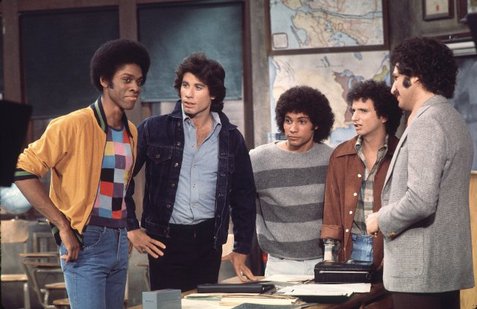
Most would likely agree that “Welcome Back, Kotter” was at its best when it was still the original four Sweathogs, i.e. before Travolta slipped away from television, put on a white suit, and found big-screen success on the dance floor, but even at its funniest, few would probably describe it as the most realistic look into high school life.
“I don’t think anyone was trying to replicate the high school experience so much as they were trying to service those particular characters and write stories about them,” said Mark Evanier, who served as a story editor for the show. “If you could get a good joke out of it, great…though there were times I think we settled for a decent catch-phrase.”
While the words “up your nose with a rubber hose” lend credence to Evanier’s theory, the Marx-Brothers-inspired chemistry between the Sweathogs helps their slapstick shenanigans hold up nonetheless. And, besides, who needs realism when you’ve got Gabe Kaplan doing Groucho? – Will Harris
10. Glee (Fox, 2009 – present): Is it telling that one of the most popular current shows on TV came it at only the #10 spot? If nothing else, maybe it proves we here at Bullz-Eye aren’t prone to fads. Except that maybe we are, as “Glee” has made it onto our TV Power Rankings lists time and again since its debut. But this list isn’t about what entertains us in the broader sense; it’s about great high school shows. As entertaining as “Glee” can be, it has almost nothing real to say about the high school experience, and in fact most of the high school kids I know find it to be pretty nonsensical.

The one area that it seems to excel in as far as capturing the high school experience is in its ability to play romantic musical chairs with its cast of teenage characters. These kids are fickle, and the only guarantee that seems to come with a relationship on “Glee” is that sooner or later it’s going to end. Some props should probably also be given for their attempt to zero in on the bullying issue that so seems to afflict kids today, but “Glee” chose to unfortunately treat the topic with kid gloves rather than say something truly meaningful. None of this is to say that “Glee” isn’t one hell of an entertaining series, because it is, but anyone looking for something a little deeper would do best to dust off their old DVD of “The Breakfast Club.” – Ross Ruediger
9. Square Pegs (CBS, 1982 – 1983): We hate to recycle the opening line of our DVD review for this classic ’80s sitcom, but since the statement still holds true, we’re going to do it, anyway: “Although there’s absolutely nothing inaccurate about labeling ‘Square Pegs’ as an artifact of its time, it’s far too lazy a phrase to use as the sole descriptor of a series that was not only one of the funniest sitcoms of the ‘80s, but the most accurate representation of ostracized high school kids this side of ‘Freaks and Geeks.’” Hyperbole, ahoy…? Not if you grew up in the ’80s, my friend.
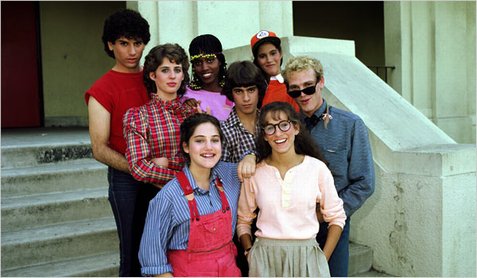
Kids today may only see the novelty value in “Square Pegs” (“Hey, look, Sarah Jessica Parker before ‘Sex and the City’!”), but back when dweebs and spazzes were still busy battling preppies and valley girls, it was – you’ll pardon the expression – totally awesome to see new wave kids represented in a halfway-accurate fashion in prime time. Admittedly, characters like Johnny Slash (Merritt Butrick), Jennifer DeNuccio (Tracy Nelson), and Muffy Tepperman (Jami Gertz) were painted with some pretty broad strokes, but those of us who suffered through the lower circles of the hell that is high school saw kindred spirits in Patty Greene (the aforementioned Ms. Parker), Lauren Hutchinson (Amy Linker), or, in my case, Marshall Blechtman (John Femia). That I was forever mystified while Marshall wasn’t considered the most hilarious kid at Weemawee High School says, I fear, rather a lot about my social standing. – Will Harris
8. Skins (2007 – present): Even though the preceding parenthetical run dates should already make it evident, let’s go ahead and clarify this point right up front: we’re talking about the UK version of “Skins,” not MTV’s attempt at Americanization. Not that we blame the network formerly known for providing Music Television for trying to put their own stamp on the property, but if all they were going to do was water it down for Stateside sensibilities, then they really needn’t have bothered. There’s a reason why creators Bryan Elsley and Jamie Brittain have been recognized by the British Academy of Film and Television Arts and Rose d’Or festival, precious little of which can be seen on “our” version.
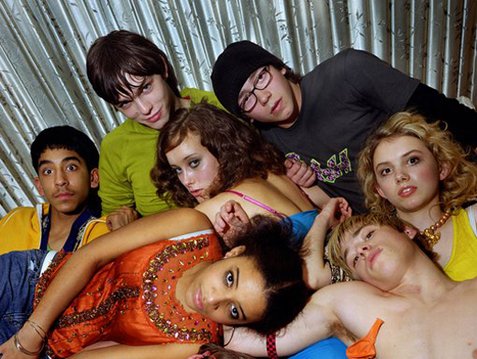
“If parents were freaking out over the incredibly unrealistic scenarios presented in ‘Gossip Girl,’” we mused in our review of “Skins: Volume One,” “then one can only imagine the series of heart attacks and strokes that could occur from viewing the disconcertingly real circumstances within this show.” That’s not to say that the level of teenage sex, drugs, and general mischief seen on “Skins” are the norm, but what will make them so disconcerting to moms and dads is that they’re presented in a manner which, unlike in your typical CW series, will make you fear that your child could be doing the same thing at the very moment! Another impressive element of “Skins” is the creators’ decision to phase out characters after a season or two, which keeps the show fresh. Shame about the MTV version, but don’t let that stop you from embracing the brilliance of the original.
7. The White Shadow (CBS, 1978 – 1981): Ken Howard starred as Ken Reeves, a former NBA player whose career is cut short by injury. An old friend reaches out to him and Reeves gives up the pros, moves to L.A. and becomes the unlikely coach of an inner city basketball team. The set up is very high concept, but the execution of “The White Shadow” was much more down to earth. Created by Bruce Paltrow, the series explored the lives of the young men, an eclectic cast of blacks and whites, as much as it dealt with Reeves adapting to his new lifestyle. With Reeves taking on the role of father figure, he did his best to help each kid reach his potential.

An early example of a dramedy, the series introduced us to memorable characters like Morris Thorpe, Go-Go Gomez, Reese, Salami (and his car, the Motel California) and of course, Coolidge. Each kid had spark and charm and made coming back each week a joy, even though the roads they travelled were often full of roadblocks like racism, drugs and violence. That rare show aimed at men of all ages that didn’t involve cops or lawyers, “The White Shadow” holds up today because it treated the high school kids like real people and not just caricatures drawn up in an executives office. – Scott Malchus
6. Parker Lewis Can’t Lose (Fox, 1990 – 1993): What “30 Rock” is to actual television production, and what “Arrested Development” was to the real real estate business, “Parker Lewis Can’t Lose” was to high school life. Wrongly tagged as a knock-off of “Ferris Bueller’s Day Off” but with an admitted debt to Phil Joanou’s little seen “Three O’Clock High,” this early 1990s sitcom was years ahead of its time in breaking the static mold of the single-camera sitcom and foreshadowing the camera tricks of more recent live-action cartoons like “Malcolm in the Middle” and “My Name is Earl.” Created by Clyde Phillips and Lon Diamond, the comedy portrayed high school not as the setting for emotional ordeals, but a place where, if valuable life-lessons were to be learned, they were going to be learned in the context of an absurdist comic wonderland of spoofery that recalled both “Rock and Roll High School” and “Airplane!”
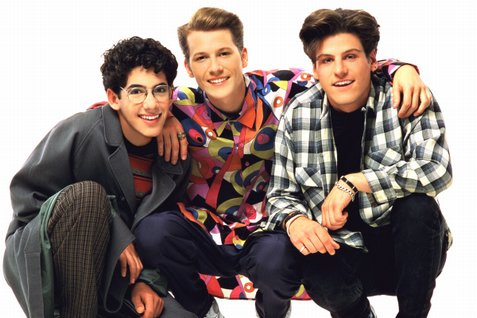
Week after week, Corin Nemec‘s preternaturally resourceful and resilient title character, soulful pompadoured rebel Mikey Randall (Billy Jayne), and insanely accomplished neurotic super-nerd and high-tech jacket wearer Jerry Steiner (Troy Slaten) thwarted the fun-killing evil plans of Principal Grace Musso (Melanie Chartoff) and Parker’s diabolical kid sister, Shelly (Maia Brewton), with cartoonish aplomb on a show that was mostly about silly spoofs, Bugs Bunny-eseque slapstick, and wish fulfillment. Dealing with the realities of adolescence was fine for other shows, but when it came to good-natured pokes at teen drama cliches, current events, and television itself, “Parker Lewis Can’t Lose” was a consistent winner. – Bob Westal
5. Buffy the Vampire Slayer (The WB, 1997 – 2001 / UPN, 2001 – 2003): Joss Whedon‘s most popular and analyzed creation is never oversubtle in the metaphor department. Was your high school a living hell? Sunnydale High sits over a “hellmouth” which attracts all forms of evil. Is teen sex fraught with peril in your experience? When Buffy Summers (Sarah Michelle Gellar), finally sleeps with her heroic vampire boyfriend, Angel (David Boreanaz), he literally loses his soul and commences eating her friends. A combination of epic fantasy a la Marvel Comics, action, not-too-scary monster horror, and soap opera with generous portions of the kind of fast-paced verbal comedy that supposedly died in 1964, “Buffy” became a television classic because it was as honest as it was fun.

Many complained when Whedon killed off sympathetic and popular characters, but a truly excellent show based on the very idea of death had to occasionally deal with death. For seven frequently brilliant, hugely inventive seasons starting in 1997, “Buffy” was equally honest, and often hilariously satiric, on topics ranging from bad relationships, to bigotry, conformism, religion, and the fact that life cam be so complicated that even the smartest among us have no clue how to deal with it. High school might be a kind of hell for some, but when Buffy and her friends graduated, the struggles only became more complex. The good news was that, with loyal friends and family members, life could be survived and enjoyed, as well as suffered. If several of those friends have super powers, even better.
4. Friday Night Lights (NBC, 2006 – 2011): Pure. That’s the only way to describe this honest, sincere portrayal of life in a small Texas city, where the ebb and flow of life revolved around the success of the high school football teams. Through five seasons, we saw a parade of characters that rang true to the real high school experience. Unfortunately, the show only attracted a loyal, cult like audience. People didn’t want realism; they wanted to escape and forget about their problems. Yet, through the wonderfully drawn characters, especially the core of the series, football coach, Eric Taylor (Kyle Chandler), and his wife, high school counselor, Tami (Connie Britton), “Friday Night Lights” offered something sorely lacking in American television: hope.
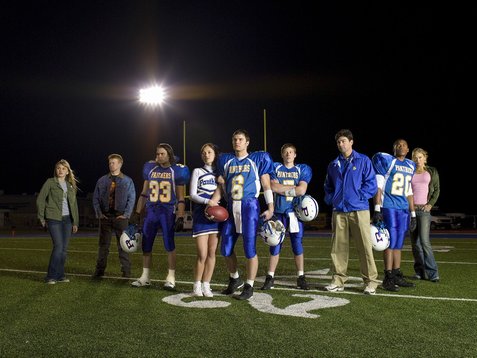
We saw teenagers face devastating injuries, get abandoned by their parents, deal with drug issues, unwanted pregnancies and the threat of jail and death. Yet, through the example set by the Taylors, at the end of every day there was an optimism that permeated from the dusty streets of Dillon. For its depiction of small town America and its truthfulness in portraying the high school experience, “Friday Night Lights” will go down as one of the premiere television dramas of the past decade, if not in the history of television. Like I said, pure. – Scott Malchus
3. Veronica Mars (UPN, 2004 – 2006 / The CW, 2006 – 2007): Juggling school work, extra-curricular activities, and dealing with the negative effects that doing the right thing can have on your social status are not new grounds for a show set in high school. Ah, but what if the high school student was also a private investigator, and not just a private investigator but a smoking hot private investigator? Then they would be Veronica Mars, who’s thrown to the dogs by her rich friends (her sheriff father suspected one of their fathers of murder) and forced to recruit a new band of Scoobies to help her solve crime and survive the hallways of Neptune High.
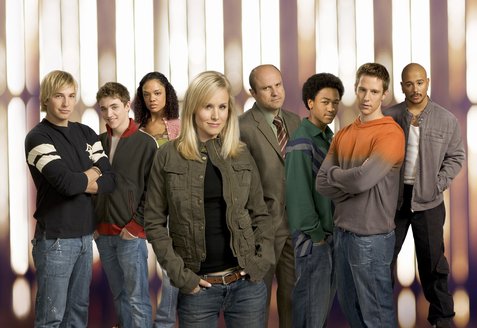
Kristen Bell has to know that this was a once-in-a-lifetime part for her – hell, she pretty much acknowledges and makes fun of that in “Forgetting Sarah Marshall” – and she made the most of it, making the guarded but vulnerable Veronica one of the most desirable women on television, even though her personal life was a shambles. She didn’t solve cupcake cases involving missing puppies, either. Veronica solved murders (including that of her best friend, which sent her boyfriend’s father to jail), caught rapists (including her own), and hung out with Latino bikers. To use characters from fellow high school show “Freaks and Geeks,” Veronica Mars is like Lindsay Weir and Kim Kelly rolled into one, street smart and tough but kind-hearted, and her supporting cast, particularly Jason Dohring and Enrico Colantoni as Veronica’s boyfriend and father, respectively, was exceptional. One of the rare shows where the high school drama has its rightful place in the grand scheme of things: at the bottom. – David Medsker
2. My So-Called Life (ABC, 1994 – 1995): It stands to reason that “My So-Called Life” and – spoiler alert! – “Freaks and Geeks” should take the top two spots on our list. They are, after all, not only great shows about high school, but truthful shows about life, full of poignancy, heartbreak and humor. This series is more feminine in its approach, whereas “Freaks and Geeks” has more of a masculine take. Claire Danes was all but a nobody when this series hit the airwaves, but that didn’t stop her from deftly imbuing Angela Chase with all the angst, hope and desire that goes along with being a teenager.

One of the most famous episodes of the series revolved around Angela being tormented by a zit, and that, more than anything else, is what being a teenager is really all about. It’s that time in your life when the smallest things carry the biggest weight. Teens change, but certain aspects of that period of years remain constant no matter what the decade. “My So-Called Life” life is just as tight and smart today as it was when ABC unveiled it 17 years ago. Many have bemoaned its early cancellation (it only lasted 19 episodes) and rightly so, as there were obviously many, many more stories to tell. But the positive side is that it got created at all, and you’ve still not seen it, by all means pick up the complete-series set from Shout! Factory. – Ross Ruediger
1. Freaks and Geeks (NBC, 1999 – 2000): Judd Apatow may have turned into a household name with the college crowd as a result of his film work, but he earned a special place in the hearts of TV critics and discerning viewers when he served as the executive producer of the single season wonder known as “Freaks and Geeks,” created by Paul Feig. The latter gentleman doesn’t get nearly enough credit for what he brought to the table for the series, but anyone who’s taken the time to read both volumes of his memoirs – Kick Me: Adventures in Adolescence and Superstud: Or How I Became A 24-Year-Old Virgin – knows of Feig’s firsthand familiarity with freakdom.
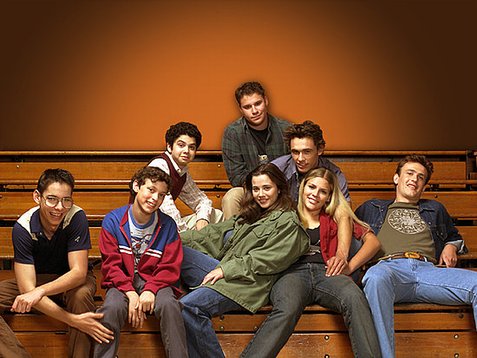
It only takes a single glance at the above photo to see that the show had a cast to die for: the freaks were James Franco, Jason Segel, Seth Rogen, and Busy Philipps, who’s now on “Cougar Town,” the geeks were Samm Levine (“Inglorious Basterds”) and Martin Starr (“Party Down”), and somewhere in between were Lindsay Weir (Linda Cardellini, late of “ER”) and her little brother, Sam (John Francis Daley, currently of “Bones”). It’s no surprise that this crew could make with the funny whenever it was required of them, but much of the humor was the sort that made you laugh both because it was funny and because you’d lived through something similar yourself, a feeling aided in no small way by having the show set in the early 1980s. Unfortunately, between the retro setting and the odd title, “Freaks and Geeks” failed to pull a large audience, a fact which seems inconceivable when you consider how many people have subsequently fallen in love with it on DVD, thanks to Shout Factory. Indeed, after watching the complete-series set, one is hard pressed to comprehend how viewers didn’t riot in the streets when the series got its walking papers. “Freaks and Geeks” isn’t just a great high school show. It’s one of the best TV series of all time. – Will Harris
Extra Credit: What, like you really thought we’d be able to narrow it down to just 12 series? Get real. Here are some of our other favorites. We still left some out, of course, but you’ve got to stop somewhere, haven’t you? (Besides, this gives you plenty of room to complain in the comments section about what we’ve forgotten.)
21 Jump Street (Fox, 1987 – 1991): God only knows what the hell we should expect from the forthcoming film adaptation of this early offering from the Fox network, but it’s a fair bet that Jonah Hill won’t walk out with the same sex-symbol status that Johnny Depp earned while playing Officer Tom Hanson. The concept of “21 Jump Street” involved a quartet of fresh-faced cops – played by Depp, Holly Robinson, Peter Deluise, and Dustin Ngyuen, with Richard Grieco joining the cast in ’88 and then spinning off into his own short-lived series, “Booker” – working undercover as high school students, regularly reporting back to their supervisor, Captain Fuller (Steven Williams). Lots of hot teen topics were tackled, most of which were resolved within an hour, just like in real life. – Will Harris
Beverly Hills, 90210 (Fox, 1990 – 2000): Although the current incarnation of this classic series (The CW’s “90210”) may have finally found its own identity now that it’s in its third season, trying to dismiss the classic classroom drama of Brandon, Brenda, Dylan, and Kelly is basically asking to get your ass kicked. (Those original-series fans are a tenacious bunch.) Few will deny that the show went on a couple of seasons longer than it probably should have, and the jokes about twentysomethings trying to get away with playing high schoolers were absolutely on the mark, but neither of those observations change the fact that “Beverly Hills 90210” defined the nighttime teen soap genre. Will Harris
Clone High (MTV, 2002 – 2003): Was this the greatest concept for a high school show ever…? You be the judge: it’s a high school entirely populated by clones of famous historical figures, created as an experiment by the U.S. military in order to harness their mental and physical abilities for the good of the nation. Abe Lincoln, JFK, Genghis Khan, Cleopatra, George Washington Carver, Helen of Troy…even Mahatma Gandhi.
“I loved that show, man,” Bill Lawrence, the co-creator of the series, told Premium Hollywood in 2009. “Once you’ve been doing this long enough, you have a couple of things in your past, you have failures that you feel failed rightfully so, and you have some failures that you’re, like, ‘That was wrong.’ TV has so many elements out of your control, be it marketing, timeslots, promotion, luck of the draw…or the Indian government, like “Clone High.’”
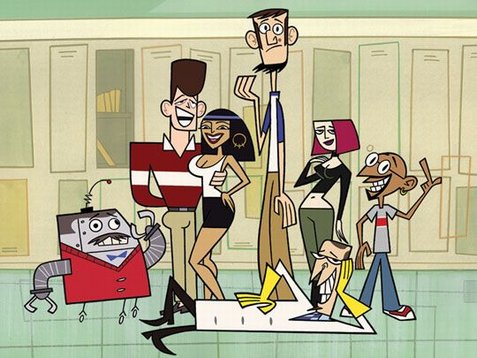
Yeah, that whole thing about including Gandhi as one of the students? Not such a hit in India. Nearly 150 Indian MPs and political activists pledged to fast in protest of the series…or, as E! Online put it, “(MTV) came under fire from Indian officials offended by ‘Clone High”s ‘toon version of Gandhi, a high schooler purportedly cloned from the assassinated Mohandas Gandhi, who goes by the nicknames G-Man, and DNA Dan, (and) has an affinity for dangly earrings, rap music, junk food and ‘being the ultimate party animal.'”
I am shocked…shocked!…that Indians would be unamused by such a depiction of the father of satyagraha. Me, though, I thought the show was hilarious. – Will Harris
Daria (MTV, 1997 – 2001): It’s easy to forget that “Daria,” the whip-smart animated series about a wise-beyond-her-years high school misanthrope who never met a line she couldn’t underdeliver, was a spin-off of the pinnacle of dumbness, “Beavis & Butt-Head.” Fortunately, the similarities end there. Daria is a rare beast of teenager, one who clearly isn’t like the other kids, but rather than having a complex or an attitude about it, she instead observes her peers – and pretty much everyone else – with detached amusement, never getting involved and never getting hurt.
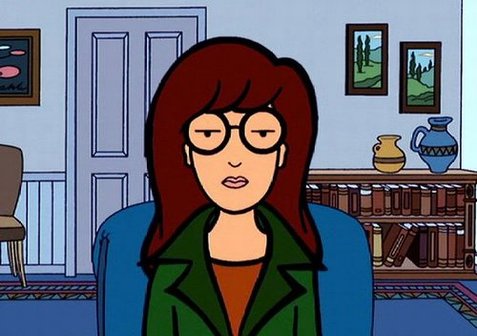
Where she inherited this personality trait is anyone’s guess, as everyone in her family is a high-strung head case, but it leads to some incredible verbal volleying with her vain but secretly smart sister Quinn, who’s one of the greatest animated characters in TV history. Even better is Trent, the slacker older brother of Daria’s best friend Jane and, temperament-wise, a perfect match for Daria. In all other aspects of life, though, they couldn’t be less alike (he’s seven years older and still lives at home). Ultimately, the true genius of “Daria” is how they provided so many shallow characters with so much depth; frankly, it’s amazing that MTV allowed something so unassumingly witty to run as long as they did. – David Medsker
Degrassi: The Next Generation (CTV, 2001 – 2009 / MuchMusic, 2010 – present): No list of high school series would be complete without a mention of this Canadian phenomenon that has lasted a staggering ten seasons on the air. Seen in the U.S. on TeenNick, “Degrassi: The Next Generation” has had a multitude of cast members (as students have grown and moved away) and introduced the world to the talents of Shenae Grimes (“Beverly Hills: 90210), Nina Dobrev (“The Vampire Diaries) and recording artist, Drake (who acted under his birth name, Aubrey Graham).
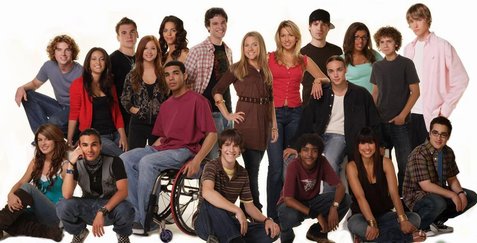
While characters have come and gone, one thing that has not changed is “Degrassi’s” dedication to tackling sensitive issues such as drugs, rape, abortion and mental illness in a realistic and thoughtful manner. Some of the plotlines may border on the soapy (this is a teen series after all), but the producers have always written with a purity that is lacking in pretty much every crass sitcom or adventure show marketed to teenagers. Obviously, the Bullz-Eye readership is not the intended audience of “Degrassi: The Next Generation,” (unless you’re a teenage boy who got sidetracked from the models pages) but if you are a fan of YA literature or high school shows in general, this Canadian import is worth checking out. – Scott Malchus
Everwood (The WB, 2002 – 2006): New York City piano protégé, Ephram Brown (Gregory Smith) is uprooted by his grieving father and moved with his younger sister to a small Colorado town. Full of himself and angry over the death of his mother, Ephram has no desire to integrate into the rural community of Everwood. But he has no choice, and viewers were thankful that his father, Dr. Andy Brown, refused to return the family back to New York. With a stellar cast, led by Treat Williams as Andy, “Everwood” was the rare family show being broadcast on any major network during the early 2000’s.

Although Williams was billed as the star, it wasn’t Andy’s story that was so compelling. It was Ephram’s and his coming of age. “Everwood” had many of the hallmarks of a teen series – the outcast trying to fit in, the girl of his dreams (Emily VanCamp) that he would eventually win, the high school bully (Chris Pratt) who would become his best friend – but it succeeded because of the sensitivity it used in approaching these universal themes, and by its execution. Often praised as one of the best written and well acted shows of its time, the series only lasted four seasons, a victim of the WB/UPN merger. However, the first three seasons of “Everwood” are available on DVD and well worth your time. – Scott Malchus
Fame (NBC, 1982 – 1983 / Syndication, 1983 – 1987): It’s appropriate, I suppose, that the only part about “Fame” that’s lived forever in my memory is its name…and I probably wouldn’t even remember that if Irene Cara’s theme song wasn’t so damned catchy. Still, the cinematic story of the New York City High School for the Performing Arts (which, though fictional, is directly inspired by the Fiorello H. LaGuardia High School of Music & Art and Performing Arts, also in New York) spawned a series that survived network cancellation to run for an additional four seasons in syndication, which is nothing to sneeze at. I’m not sure it’s a good thing that it inspired a generation of insufficiently-talented kids to say, “I am totally talented enough to go to one of those schools,” but I guess it’s no worse than the similar delusions inspired by “American Idol.” – Will Harris
Head of the Class (ABC, 1986 – 1991): Who knew that Johnny Fever’s doctorate was an EdD? (We’d always presumed it was something to do with pharmaceuticals.)

After seeing the three dispensable seasons of “WKRP in Cincinnati” episodes rerun over and over and over again, it was somewhat jarring to see a ‘stache-less Howard Hesseman not only standing in front of a classroom, wearing a coat and/or tie (but rarely both) and shaping young minds, but – gasp! – wearing a suit. Charlie Moore (Hesseman) came into a Manhattan high school as a substitute history teacher, but he soon finds himself as the full-time instructor to the school’s academically-gifted students, including nerdy Arvid (Dan Frischman), chubby Dennis (Dan Schneider), super-spoiled Darlene (Robin Givens), and Janice (Tannis Vallely), otherwise known as the little girl with pigtails and glasses. By the time the series wrapped, however, Hesseman was long gone, having been replaced by Billy Connolly, a very funny man who, alas, was never really in a position to play to his comedic strengths.
“Head of the Class” wasn’t what you’d call edgy, but it’s worthy of mention because of its noble efforts to take away some of the stigma of being a smart kid. Unfortunately, it’s also pretty dated, which is why you don’t see it in syndication very much anymore. (Those Reagan jokes just don’t play the way they used to.) – Will Harris
James at 15 / James at 16 (NBC, 1977 – 1978): It’s almost quaint to think that this series, which changed its title with the age of its lead character, erupted in controversy over the network’s decision to make James – played by Lance Kerwin – feel bad about losing his virginity. Indeed, the show’s creator, Dan Wakefield, quit the show as a result.
According to People at the time…
Wakefield submitted a script calling for James to yield his virtue to a Swedish exchange student on his 16th birthday. (The title will simultaneously age to James at 16.) But squeamish NBC censors balked at Wakefield’s treatment of sex and contraception and had the show rewritten to “punish” the young lovers with guilt. “The network didn’t mind that James was going to have sex,” claims Wakefield, who is working in television for the first time, “but they said even a vague mention of birth control [James’ euphemism: “Are you responsible?”] made the episode too controversial. I felt it would have been totally irresponsible not to include that reference.” NBC answers that the script’s problem was not birth control but the “dangerous ground” of “promiscuity.”
History, thankfully, has allowed Wakefield to have the last laugh: when people look back at this storyline now, the only thing they’re thinking is, “Man, I wish I’d lost my virginity to a Swedish exchange student. That’d only be, like, the best first-time story ever!”
Room 222 (ABC, 1969 – 1974): You didn’t need to be a media theorist to figure out that this witty, well-acted comedy-drama, created by a young James L. Brooks, operated on a formula.

It would start with comedic repartee between wry, befuddled principal Seymour Kaufman (Michael Constantine) — yes, there probably is a “Simpsons” connection there — adorably zany student teacher Alice Johnson (Karen Valentine), smart school-counselor Liz McIntyre (Denise Nicolas), and history teacher Pete Dixon (Lloyd Haynes). Since Mr. Dixon and Miss McIntyre were both thirtyish and African-American, it followed that they were dating.
After the first commercial break, a troubled student would emerge, often with a problem ripped from the headlines of the day. After the second break, the troubled student would have a heart-to-heart chat with the extremely wise, compassionate and Poitier-esque Mr. Haynes. By the epilogue, the student would be on the road to a productive adult life.
To be fair, the formula did get broken at times, and the show was a trailblazer in its relatively realistic depiction of the kinds of multi-ethnic schools that were then emerging in racial-strife-torn Los Angeles. It also remains a frightening depiction of early 1970s male hairstyles. Wacky comedy relief student Bernie (David Jolliffe) sported television’s most massive Jewfro, which easily dwarfed the staid Afros of black characters like his buddy, Jason (Heshimu). Bernie’s hair didn’t win any awards, but, by God, it deserved its own show. – Bob Westal
Saved by the Bell (NBC, 1989 – 1993): All things being equal, if we’re going to watch Elizabeth Berkeley in something, we’d just as soon make it “Showgirls” (the acting’s just as bad, but as least we get nudity), but we can’t deny the staying power of this kitschy Saturday morning sitcom. That doesn’t mean we have to write much about it, though. – Will Harris
The Wonder Years (ABC, 1988 – 1993): Given that every single member of the Bullz-Eye staff swears by this coming-of-age comedy…or dramedy, really, once you consider how many times it made us tear up over the years…it’s a little surprising that Kevin Arnold and company didn’t actually rank in the list proper. Or is it?
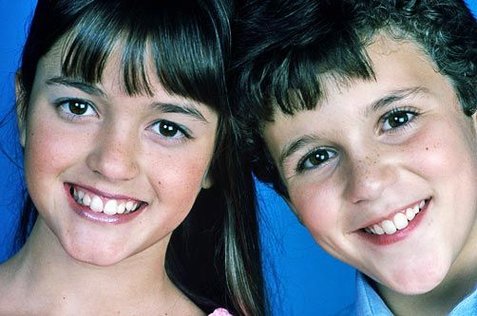
I don’t know about you, but when I think of “The Wonder Years,” I think most specifically of the early episodes, when Kevin and Winnie weren’t even in their teens yet (Fred Savage was 12 when the show started). Plus, so many of the key storylines involved the Arnold family that, even with all of those appearances by Robert Picardo as Coach Cutlip and that gut-wrenching episode when Kevin’s algebra teacher dies unexpectedly from a heart attack, I just don’t think of “The Wonder Years” first and foremost as a high school show…not that that makes it any less awesome. – Will Harris
Related Posts
You can follow us on Twitter and Facebook for content updates. Also, sign up for our email list for weekly updates and check us out on Google+ as well.
Posted in: Entertainment, Television
Tags: 21 Jump Street, 30 Rock, Airplane!, Amy Linker, Arrested Development, Beverly Hills 90210, Billy Jayne, Bruce Paltrow, Bryan Elsley, Buffy the Vampire Slayer, Chris Lowell, Claire Danes, Clone High, Clyde Phillips, Connie Britton, Corin Nemec, David Boreanaz, Dawson's Creek, Degrassi, Degrassi High, Degrassi: The Next Generation, Doing It, Enrico Colantoni, Everwood, Fame, Ferris Bueller's Day Off, Freaks and Geeks, Friday Night Lights, Gabe Kaplan, glee, Gossip Girl, Head of the Class, James at 15, Jami Gertz, Jamie Brittain, Jason Dohring, John Femia, John Sebastian, John Travolta, Jon Foster, Joss Whedon, Kelly Osbourne, Ken Howard, Kristen Bell, Kyle Chandler, Lawrence Hilton-Jacobs, Life As We Know It, Maia Brewton, Malcolm in the Middle, Mark Evanier, Melanie Chartoff, Merritt Butrick, Missy Peregrym, My Name is Earl, My So-Called Life, Parker Lewis Can't Lose, Phil Joanou, Robert Hegyes, Rock and Roll High School, Ron Palillo, Room 222, Sarah Jessica Parker, Sarah Michelle Gellar, Saved by the Bell, Sean Faris, Sex and the City, Skins, Square Pegs, The Breakfast Club, The O.C., The White Shadow, The Wonder Years, Three O'Clock High, Tracy Nelson, Troy Slaten, Veronica Mars, Welcome Back Kotter










